Principles for Conducting Research in the Arctic 2018
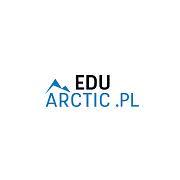 Resource Available
Resource Available
Principles for Conducting Research in the Arctic 2018
Interagency Arctic Research Policy Committee (IARPC)
For more information and to download the Principles, go to:
Principles for Conducting Research in the Arctic homepage
The Interagency Arctic Research Policy Committee (IARPC) announces the release of the Principles for Conducting Research in the Arctic 2018. The revised Principles build upon the 1990 version.
Through an extensive comment and review process, the updated version includes five Principles that reflect the values held widely about how researchers should plan and conduct Arctic research.
The core Principles for Conducting Research in the Arctic are:
- Be Accountable
- Establish Effective Communication
- Respect Indigenous Knowledge and Cultures
- Build and Sustain Relationships
- Pursue Responsible Environmental Stewardship
The Principles are available on the IARPC Collaborations Portal at:
Principles for Conducting Research in the Arctic homepage
Blisko 88 mln zł z MNiSW dla Polskiej Stacji Antarktycznej im. H. Arctowskiego

Ministerstwo Nauki i Szkolnictwa Wyższego przeznaczyło blisko 88 mln zł na przebudowę infrastruktury Polskiej Stacji Antarktycznej im. H. Arctowskiego, w tym budowę nowego budynku głównego. Stacja umożliwia polskim naukowcom prowadzenie ambitnych programów badawczych i współpracę z najlepszymi placówkami naukowymi z całego świata, jest także polską wizytówką i nieoficjalną ambasadą RP w Antarktyce.Operatorem stacji jest Instytut Biochemii i Biofizyki PAN, któremu składamy serdeczne gratulacje.
Prof. dr hab. Kazimierz Pękala
 Z wielkim smutkiem informujemy,
Z wielkim smutkiem informujemy,
że 20 listopada 2018 r. odszedł do Wieczności
Prof. dr hab. Kazimierz Pękala
Honorowy Członek Komitetu Badań Polarnych PAN, wybitny uczony, geomorfolog, badacz wieloletniej zmarzliny i środowiska polarnego. Twórca Lubelskiej Szkoły Badań Polarnych i Stacji Badawczej UMCS w Calypsobyen na Spitsbergenie. Wychował kilka pokoleń badaczy polarnych zarażonych Jego entuzjazmem i pasją. Pełnił wiele funkcji. Był m.in. wieloletnim Prezesem Klubu Polarnego PTG, Reprezentantem Polski w International Permafrost Association.
Odszedł Uczony, ale przede wszystkim Dobry Człowiek, życzliwy wszystkim.
Będzie Cię nam brakowało Przyjacielu.
Cześć Jego Pamięci!
(Fot. Piotr Zagórski)
Call for Session Abstracts
 Call for Session Abstracts
Call for Session Abstracts
Boundary Layers in High Latitudes
European Geosciences Union General Assembly 2019
7-12 April 2019
Vienna, Austria
Abstract submission deadline: 10 January 2019, 1:00 p.m. Central European Time
For more information about the meeting, go to:
Conference homepage
The European Geosciences Union (EGU) is currently accepting abstract submissions for the EGU General Assembly 2019. This meeting will convene 7-12 April 2019 in Vienna, Austria.
Conveners of the following session invite abstract submissions:
SESSION AS2.3/CR3.10/OS1.14: Boundary Layers in High Latitudes
Conveners: Günther Heinemann, Jo Browse, Julia Schmale, Michael Tjernström, and Gillian Young
Changes in the Arctic and Antarctic climate systems are strongly related to processes in the boundary layer and their feedbacks with the free troposphere. An adequate understanding and quantification of these processes is necessary to improve predictions of future changes in the polar regions and their teleconnections with mid-latitude weather and climate, including meridional transport of heat, moisture, and air pollutants. Processes include atmosphere-ocean-ice (AOI) interactions, such as physical and chemical snow processes (e.g., snow photochemistry), exchange of chemical constituents, sources of aerosol, polynya formation processes, sea ice production and bottom water formation, and cloud formation, which represent key processes for the atmosphere, ocean, and the cryosphere. AOI interactions are also triggered by and have feedbacks with synoptic systems and mesoscale weather phenomena such as cold air outbreaks, katabatic winds, and polar lows. Associated processes also include the effect of warm air advection and clouds on the surface energy budget and related boundary layer exchanges. Of increasing interest is the study of extremes such as heat waves and storms, but also extreme meridional transport events that can disturb the physical and chemical state of the high latitudes and may have a large impact on ecosystem changes. In addition, Arctic boundary-layer processes play an important role for local Arctic air pollution and for the health and ecosystem impacts thereof. Understanding natural processes, including AOI interactions, is essential to the understanding of the background atmosphere to quantify the anthropogenic impacts. Shallow inversions, mostly during winter-time, lead to high air pollutant concentrations. Even though severe air pollution episodes are frequently observed in the Arctic, knowledge on urban emission sources and atmospheric chemical processing of pollution, especially under cold and dark conditions, are poorly understood.
This session is intended to provide an interdisciplinary forum to bring together researchers working in the area of boundary layer processes and high-latitude weather and climate (including snow physics, air/snow chemistry, and oceanography). Cryosphere and atmospheric chemistry processes are highly relevant to this session.
Session conveners invite contributions in the following areas:
• Observations and research on the energy balance, physical and chemical exchange processes, and atmosphere-ocean-ice (AOI) interactions, including particle sources;
• Results from high-elevation sites where similar processes occur over snow and ice;
• Field programs, laboratory studies, and observational studies including remote sensing;
• Model studies and reanalyses;
• Advances in observing technology;
• External controls on the boundary layer such as clouds, aerosols, and radiation;
• Teleconnections between the polar regions and mid-latitudes resulting in effects related to atmosphere-ice-ocean interactions, as well as insights provided by monitoring of water vapor isotopes that shed light on air mass origins; and
• High-latitude urban air quality studies.
For more information or to submit an abstract to this session, go to:
Session webpage
For questions about this session, contact:
Günther Heinemann
Email:
Michael Tjernström
Email:
Jo Browse
Email:
Julia Schmale
Email:
Gillian Young
Email:
The Arctic Observing Summit: Background and Synthesis of Outcomes 2013-2016
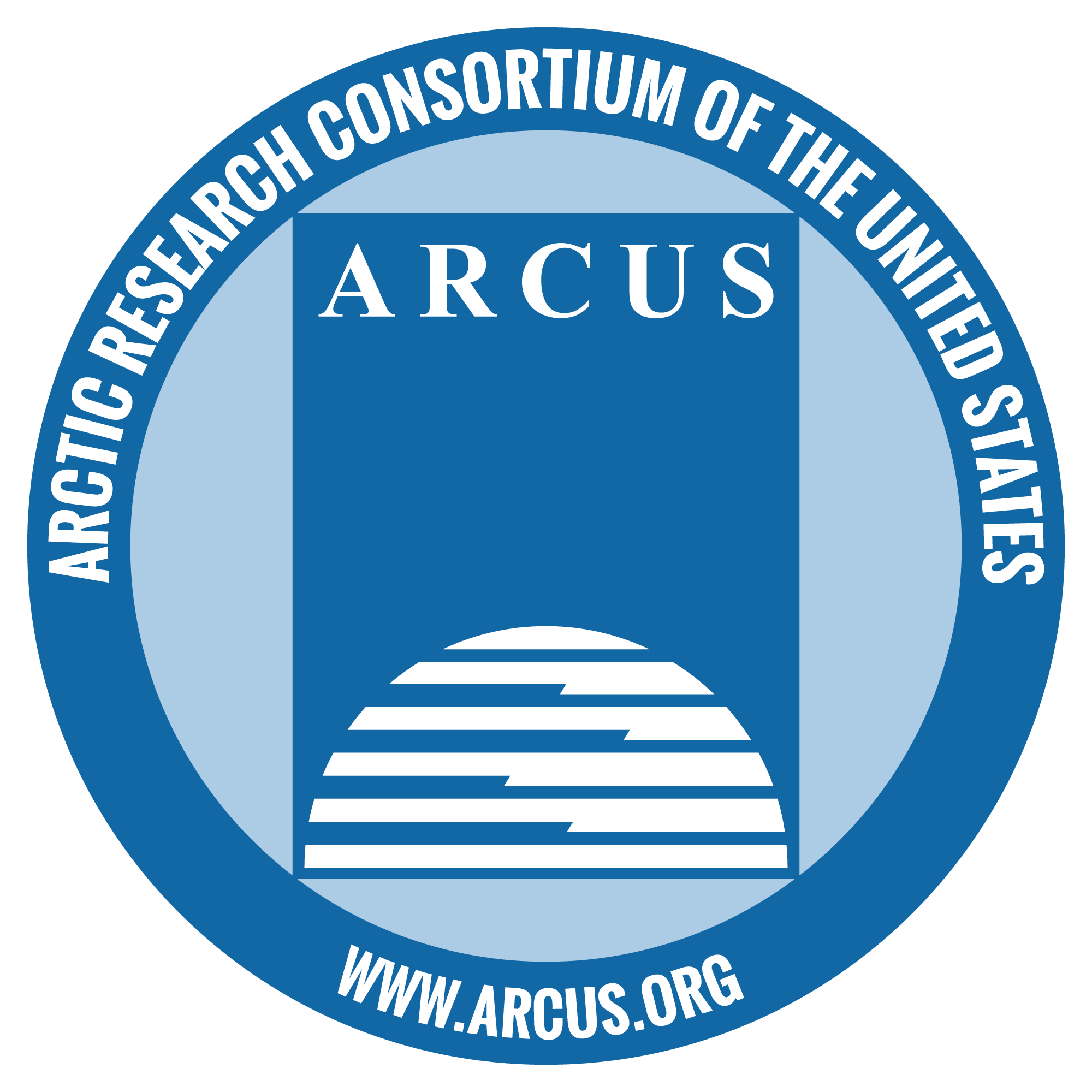 The authors announce the release of the report, The Arctic Observing Summit: Background and Synthesis of Outcomes 2013-2016. This report summarizes the main recommendations from the first three Arctic Observing Summits (AOS), held in 2013, 2014, and 2016.
The authors announce the release of the report, The Arctic Observing Summit: Background and Synthesis of Outcomes 2013-2016. This report summarizes the main recommendations from the first three Arctic Observing Summits (AOS), held in 2013, 2014, and 2016.
The AOS initiative originated from widespread agreement on the need to improve the coverage and coordination of pan-Arctic observing activities, and the communication and utilization of observational information to and by the widest possible audience for the purposes of basic research, problem solving, and decision-making. There is an ongoing demand to facilitate dialogue that will enable responding and adapting to Arctic environmental change and this includes the iterative development of recommendations to foster the coordination of observing activities and to improve existing Arctic observing systems.
To read or download the report, go to:
Report webpage (PDF - 3,603.48 KB)
For questions, contact:
Ravi Darwin Sankar
Email:
Phone: 403-220-7928
Call for Applications: IASC Fellowship Program 2019
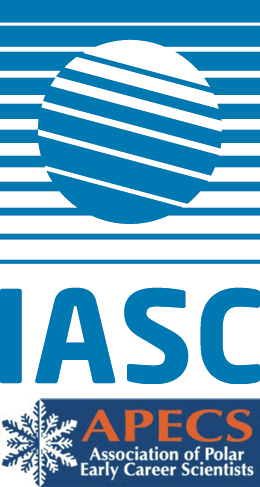 The International Arctic Science Committee (IASC), in cooperation with the Association of Polar Early Career Scientists (APECS), invites Early Career Scientists (ECS) to apply for the 2019 IASC Fellowship Program.
The International Arctic Science Committee (IASC), in cooperation with the Association of Polar Early Career Scientists (APECS), invites Early Career Scientists (ECS) to apply for the 2019 IASC Fellowship Program.
The IASC Fellowship Program is meant to engage ECS in the work of the IASC Working Groups (WGs): Atmosphere, Cryosphere, Marine, Social & Human, and Terrestrial. Each year, one Fellow per WG is chosen.
IASC Fellows are doctoral or postdoctoral researchers who actively participate in selected activities of the IASC WGs. Fellows are expected to contribute scientifically but also to help organize specific activities and to coordinate the reporting to the IASC Secretariat. Thus, the Fellowship Program provides the opportunity for ECSs to become involved in leading-edge scientific activities at a circumarctic and international level, to build an international network, and also to develop management skills. The level of involvement very much depends on the Fellow's interest - the more you invest, the more you get out of it!
The total duration of the IASC Fellowship Program is 1+2 years. In their first year, selected Fellows will receive travel support to attend two consecutive Arctic Science Summit Weeks (ASSWs) where the annual WG meetings are held. After the first year, Fellows have the opportunity to stay involved for up to 2 more years without dedicated funding support from IASC. Note: The travel support during the first fellowship year is the only financial remuneration for the Fellows. Salary is not included during the fellowship.
For more information, please see http://iasc.info/capacity-building/fellowship or contact the IASC Fellowship Coordinator Maja Lisowska (
Webinar:
Current IASC Fellows are planning on running a webinar in November to showcase their experience as IASC Fellows and some of the projects they have been able to work on. More information will be made available over IASC and APECS' email lists. You can join for the IASC email list here or become an APECS member here.
For this round of applications, interested ECSs must fulfill the following criteria:
- PhD student/candidate or postdoctoral researcher (up to 5 years past the PhD)
- Able to commit to participating in the activities of one of an IASC WG for at least 1 year
- Able to attend the two upcoming ASSWs: 22 - 30 May 2019 in Arkhangelsk, Russia, and 27 March - 2 April 2020 in Akureyri, Iceland
- Located in an IASC member country
- Have a good command of English
How to apply:
If you are interested in this amazing opportunity then please fill out this application form. If you have problems accessing or submitting the form, please contact the APECS Executive Director Gerlis Fugmann at
Selection process:
The selection of candidates is coordinated by APECS and will be only based on the material you provide in the application form. So be as specific as possible. Applications will be reviewed according to multiple criteria including your research background and the quality of your statement of interest of why you would like to be come an IASC fellow. Top candidates will be suggested to the WG Steering Committees, who will decide on their 2019 IASC Fellow.
The application deadline is Monday 19 November 2018 at 13:00 GMT. Late applications will not be considered. Successful applicants will be notified before the end of the year.
Nagroda Naukowa POLITYKI dla dr Mateusza Strzeleckiego

Z przyjemnością i prawdziwą satysfakcją informujemy, że geograf, dr Mateusz C. Strzelecki z Wydziału Nauk o Ziemi i Kształtowania Środowiska Uniwersytetu Wrocławskiego, Członek Komitetu Badań Polarnych został wyróżniony Nagrodą Naukową POLITYKI w 18 edycji konkursu tego tygodnika.
Wręczenie nagród odbędzie się dnia 28 października 2018 r. w Warszawie.
Laureatowi serdecznie gratulujemy i życzymy wielu dalszych sukcesów.
Przewodniczący i Prezydium
Komitetu Badań Polarnych PAN
SCAR Visiting Scholars Scheme

The SCAR Visiting Scholars Scheme (previously called the Visiting Professors Scheme) is open for applications until Monday 3 December 2018.
The SCAR Visiting Scholars Scheme (previously called the Visiting Professors Scheme) is open for applications until Monday 3 December 2018.
SCAR Visiting Scholarships are for mid- to late-career stage scientists and academics (at least 5 years after completing their PhD) who are involved in Antarctic research, providing the opportunity for them to undertake a short-term visit (1 to 4 weeks) to an institute(s) in another SCAR member country, to provide training and mentoring.
For 2018, both the eligibility criteria and the application process have been revised. The core purpose of the scheme is to build capacity in countries with smaller or less-developed Antarctic research programmes. Visits can be either to smaller and developing programmes or from smaller and developing programmes, so the capacity building process can be proposed in either way. The scheme is for any scientists and academics whose research contributes to SCAR's objectives, as embodied in the Science Groups and Scientific Research Programmes.
The scheme provides awards of up to USD $5000 each, covering the cost of an international return flight and some contribution towards living expenses for the visiting period. Full information on the scheme, including details of the application process and assessment criteria, is available on the Visiting Scholar Detailed Information page of the SCAR website.
The closing date for applications is Monday 3 December 2018.
Queries about the scheme should be sent to
The Visiting Scholar Scheme is seen to complement the early-career SCAR Fellowship Scheme by providing scientists and academics with the opportunity to intensify collaboration amongst SCAR member countries and to contribute to SCAR’s objectives.
For more information, visit https://www.scar.org/awards/visiting-scholars/information/
------------------------------------------------------------|
SCAR Secretariat
Scientific Committee on Antarctic Research
Scott Polar Research Institute
University of Cambridge
Lensfield Road
Cambridge, CB2 1ER
UK
Tel: +44 1223 336550
Fax: +44 1223 336549
Email:
Website: www.scar.org
IASC
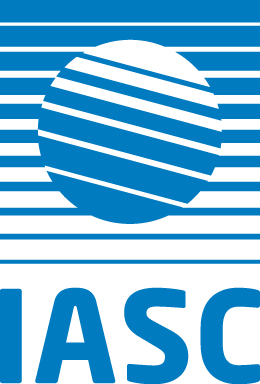
Otwarcie konkursu na korzystanie z infrastruktury INTERACT w latach 2019-2020

Informujemy, że sieć INTERACT (International Network for Terrestrial Research and Monitoring in the Arctic) ogłosiła nabór wniosków na wykorzystywanie infrastruktury 43 stacji badawczych zrzeszonych w ww. sieci (w tym do Polskiej Stacji Polarnej Hornsund na Spitsbergenie, jak również do innych stacji położonych w Europie, Rosji i Ameryce Płn. związanych z badaniami i monitoringiem Arktyki).
Konkurs dotyczy projektów, których realizacja planowana jest pomiędzy marcem 2019 r.a kwietniem 2020 r. Termin składania wniosków upływa 12 października 2018 roku. Szczegóły dotyczące konkursu można uzyskać pod poniższym linkiem: https://eu-interact.org/accessing-the-arctic/tacall/ lub poprzez bezpośredni kontakt z koordynatorem konkursu, p. Hannele Savelą
Zachęcamy również do udziału w webinarium poświęconym temu konkursowi, które odbędzie się 11 września o 15:00. Szczegóły w linku powyżej.
Jednym z warunków uzyskania finansowania jest korzystanie z infrastruktury należącej do innego kraju niż ta, z którego pochodzi osoba aplikująca. Oznacza to, że naukowcy z Polski nie mogą aplikować o sfinansowanie dostępu do Polskiej Stacji Polarnej Hornsund, mogą to natomiast robić naukowcy z zagranicy.
W związku z powyższym, zwracamy się z prośbą o przekazanie informacji o konkursie Państwa kolegom i współpracownikom z instytucji naukowych z zagranicy (treść informacji w wersji angielskiej poniżej). Być może zachęci ich to do skorzystania z oferty dostępu do Polskiej Stacji Polarnej Hornsund na Spitsbergenie.
Państwa z kolei zachęcamy do zapoznania się z pozostałymi udostępnianymi stacjami (https://eu-interact.org/accessing-the-arctic/infrastructures/), mając nadzieję na aktywny udział polskiego środowiska naukowego w tym konkursie.
Otwarcie konkursu na korzystanie z infrastruktury INTERACT w latach 2019-2020.pdf
XXXVII Sympozjum Polarne
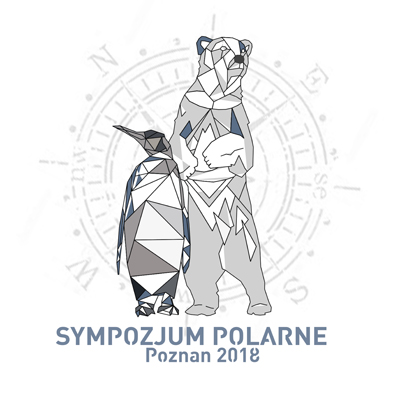
8-10 czerwca 2018, Poznań
7.06.2018 - Icebreaker / Spotkanie Komitetu Badań Polarnych PAN
8-10.06.2018 - Termin Sympozjum
Zmiany na stanowisku Dyrektora Wykonawczego SCAR

Informujemy, że stanowisko Dyrektor Wykonawczej SCAR objęła Dr Chandrika Nath, która uzyskała doktorat na Uniwersytecie Oxfordzkim za pracę nad wysokoenergetycznymi cząstkami elementarnymi, w latach 1998-2002 brała udział w badaniach glacjologicznych dla British Antarctic Survey i posiada znaczne doświadczenie z zakresu polityki środowiskowej i komunikacji.
XXVIII Seminarium Meteorologii i Klimatologii Polarnej

Przypominamy, że tegoroczne seminarium XXVIII Seminarium Meteorologii i Klimatologii Polarnej odbędzie się w dniach 11-12 maja 2018 roku na Wydziale Nauk o Ziemi Uniwersytetu Śląskiego przy ulicy Będzińskiej 60 w Sosnowcu.
Uprzejmie prosimy o zapoznanie się z komunikatem nr 2
Ewa Łupikasza oraz Tadeusz Niedźwiedź
wraz z Komitetem Organizacyjnym
Komitet Organizacyjny:
dr Artur Widawski - sekretarz
dr hab. Zuzanna Bielec-Bąkowska
dr hab. Małgorzata Falarz
dr Magdalena Opała-Owczarek
dr Łukasz Małarzewski
mgr Tomasz Budzik
mgr Katarzyna Cielecka
European Polar Board
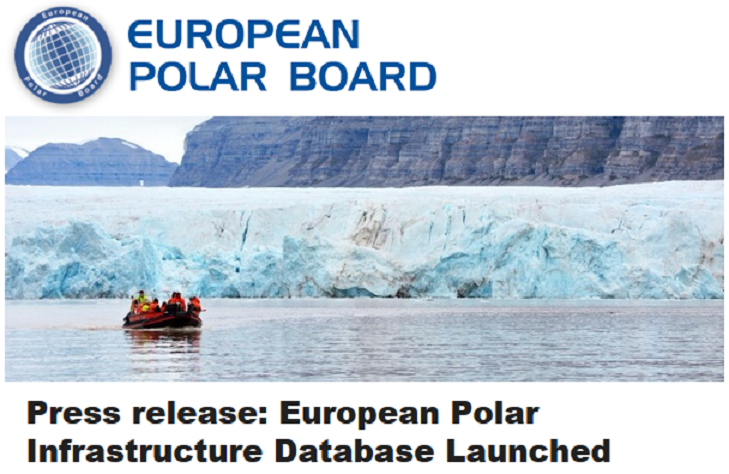
The European Polar Board (EPB) and EU-PolarNet are pleased to announce the launch of the European Polar Infrastructure Database. The database, which includes detailed information on European stations, vessels and aircraft available for Arctic and Antarctic research, provides a valuable information source to support the planning of polar research fieldwork and an up to date inventory of European logistical capabilities in the polar regions. The database is fully updateable, with infrastructure managers able to access and manage information on their facilities, and new facilities can be added.
The European Polar Infrastructure Database was compiled by the EPB in collaboration with EU-PolarNet, with data provided by the Council of Managers of National Antarctic Programs (COMNAP), the International Network for Terrestrial Research and Monitoring in the Arctic (INTERACT), and EUROFLEETS2. Work on the database was led by Yves Frenot (Institut Polaire Francais Paul Emile Victor (IPEV)) and Gonçalo Vieira (University of Lisbon (IGOT-UL)) through their work in the EU-PolarNet project. Other contributors to the development of the database were Luis Encalada (IGOT-UL), Carla Mora (IGOT-UL), Joseph E Nolan (EPB), and Renuka Badhe (EPB).
To access the European Polar Infrastructure Database, visit http://www.europeanpolarboard.

EU-Polarnet, Tallin (27-28.03)

Podczas spotkania EU-Polarnet w Tallinie (27-28.03) przedstawiono informacje na temat nowych inicjatyw i projektów, które warto spopularyzować w Polsce.
Zapraszamy zatem do zajrzenia na strony:
EU Arctic Cluster: http://www.eu-polarnet.eu/eu-arctic-cluster/
ARICE: (Arctic Research Icebreaker Consortium): https://www.arice.eu/
Portugalskiego programu polarnego:
Zmiana na stanowisku Redaktora Naczelnego Biuletynu Polarnego
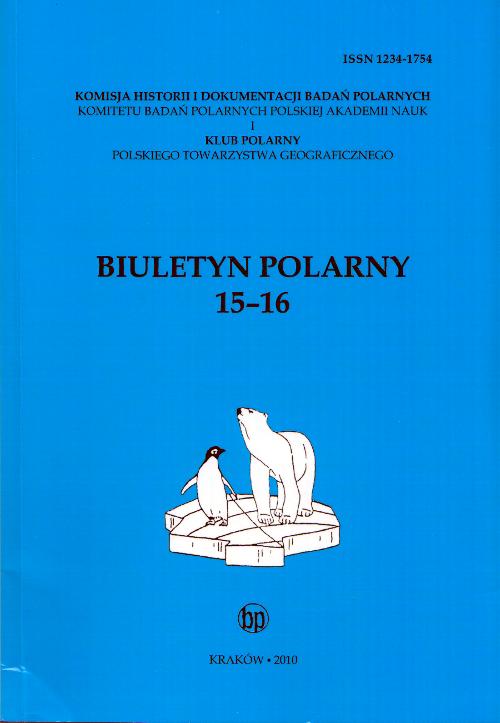
Szanowni Państwo,
w zawiązku ze zmianą na stanowisku Redaktora Naczelnego Biuletynu Polarnego składamy serdeczne podziękowania dla Prof. Andrzeja Maneckiego za Jego wieloletnią pracę, a szczególnie za starania na rzecz zapewnienia ciągłości wydawana Biuletynu.
Jednocześnie składamy serdeczne gratulacje dla Prof. Marii Olech z okazji objęcia przez Nią funkcji Redaktor Naczelnej.
Biuletyn Polarny - powstały z inspiracji profesora Zdzisława Czeppe (1917-1991), wybitnego geografa UJ, polarnika i od lat dokumentujący rozwój polskiej polarystyki - jest wydawany pod auspicjami KBP PAN dzięki środkom Klubu Polarnego oraz dotacjom sponsorów.
Prezydium Komitetu Badań Polarnych PAN
DRAMATYKA* KULTURY I NATURY: RELACJE MIĘDZY POLSKĄ A PÓŁNOCĄ

Instytut Skandynawistyki Uniwersytetu Gdańskiego
zaprasza do udziału w międzynarodowej, interdyscyplinarnej konferencji naukowej pt.
DRAMATYKA* KULTURY I NATURY: RELACJE MIĘDZY POLSKĄ A PÓŁNOCĄ
Termin: 14–16 maja 2018 r.
Miejsce: Gdańsk, Sala Teatralna budynku Neofilologii,
ul. Wita Stwosza 51
W 14. rocznicę przystąpienia Polski do Unii Europejskiej i zapoczątkowania tym samym intensywnych kontaktów polityczno-gospodarczych pomiędzy naszym krajem a Europą Północną oraz w obliczu zataczającej coraz szersze kręgi popkulturowej mody na „skandynawskość” czy „nordyckość” zapraszamy do Gdańska do udziału w dyskusji nad wielowymiarowością relacji pomiędzy oboma obszarami, stanowiących przedmiot badań wielu dyscyplin naukowych...
Rekruracja na XLIII wyprawę antarktyczną

Trwa rekrutacja kandydatów na uczestników 43 wyprawy antarktycznej na Polską Stację Antarktyczną im. H. Arctowskiego w sezonie 2018-2019!
Szczegóły na stronach:
http://arctowski.aq/pl/rekrutacja/
https://www.ibb.waw.pl/sites/default/files/ogloszenie_nabor_arctowski_2018.pdf
Prosimy o przesłanie wymaganych dokumentów do dnia: 31.01.2018!
Tytuł naukowy Profesora dla Piotra Głowackiego
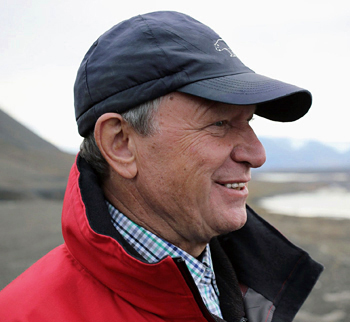 Piotr Głowacki postanowieniem Prezydenta Rzeczypospolitej Polskiej z dnia 29 stycznia 2018 r. otrzymał tytuł naukowy Profesora.
Piotr Głowacki postanowieniem Prezydenta Rzeczypospolitej Polskiej z dnia 29 stycznia 2018 r. otrzymał tytuł naukowy Profesora.
Nominacja ta wieńczy niezwykły trud, sukcesy i wartość osiągnięć naukowych Piotra Głowackiego w obszarze badań polarnych i obecnym wizerunku naszej stacji w Hornsundzie.
Serdecznie gratulujemy!
"Quantarctica 3"
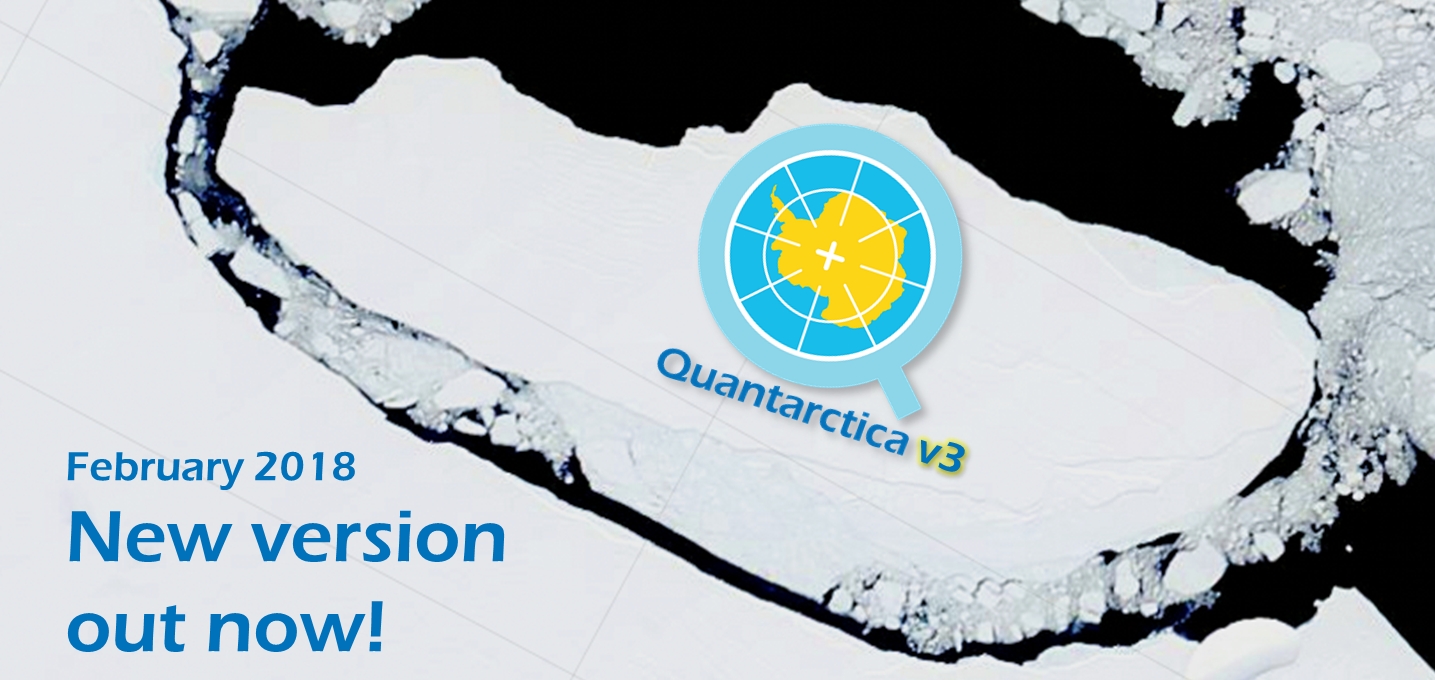
Norwegian Polar Institute ogłosił wydanie najnowszej, darmowej wersji produktu SCAR: Quantarctica 3 (platforma GIS waz z danymi wysokiej jakości). Quantarctica została opracowana dzięki opinii, pomocy i doświadczeniu wielu badaczy oraz dzięki koordynacji SCAR.
Quantarctica 3 jest dostępna na stronie www: http://quantarctica.npolar.no/
Wszelkie pytania, komentarze, raporty o błędach należy kierować na adres e-mail:
The Norwegian Polar Institute is proud to announce the release of Quantarctica 3.
Quantarctica 3, designated a SCAR Product in 2014, is the result of a two-year dedicated development effort. Thanks to the work of the Quantarctica Project Team, Editorial Board, and feedback from hundreds of Antarctic researchers around the world, this version is Quantarctica's biggest release yet, adding:
Eight new themes with over 50 new datasets in over 100 new layers: Atmospheric Science, Biology, Environmental Management, Geology, Ice Cores, Oceanography, Sea Ice, and Social Science
New additions and updates to the pre-existing Geophysics and Glaciology categories
The Quantarctica Data Catalog (http://quantarctica.npolar.no/data-catalog), where you can view preview images, metadata, and citation information for every dataset
Northward expansion of Quantarctica's project boundary to 40°S, including subantarctic islands
Improved and expanded basemap, terrain, and satellite imagery layers
Updates, resolution improvements, and stability enhancements to datasets from v1 and v2
New features in QGIS and significant enhancements to project stability, speed, and usability
Visit http://quantarctica.npolar.no/ to download the latest version. And please consider sharing the news and your own Quantarctica-made creations on social media- #quantarctica, #qgis , and @norskpolar are good things to tag!
And as always, if you have any questions, comments, bug reports, or good-looking maps, send us an email at
Quantarctica was developed with the feedback, assistance, and experience of numerous researchers thanks to SCAR's coordination and vision. Quantarctica is made for and by the Antarctic community - we could not have created this new version without you. We look forward to seeing Quantarctica in use on the ice and in many figures in the years to come!




